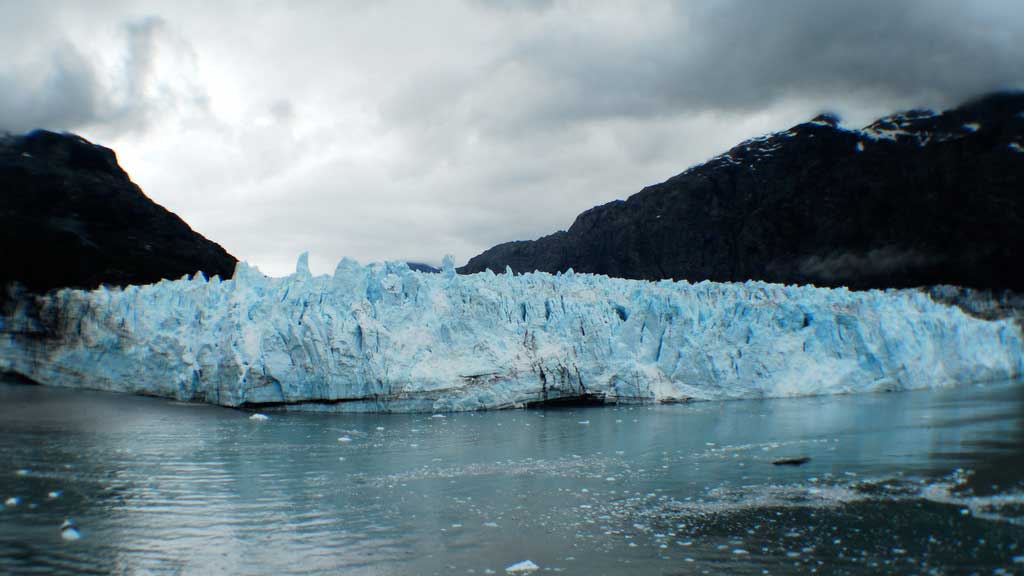Most glaciers move very slowly, usually less than a foot a day, although some have been known to move more than 50 feet a day.

However, different layers of one glacier also move at different speeds. The bottom moves slowly because it is rubbing against the land, while the middle and top move more quickly because they are ice sliding against ice.
Scientists measure the speed of a glacier by pounding stakes into the ice at different points and seeing how quickly or slowly their position changes.
The fastest-moving glacier ever recorded is the Quarayaq Glacier in Greenland, which has traveled 80 feet in one day.
